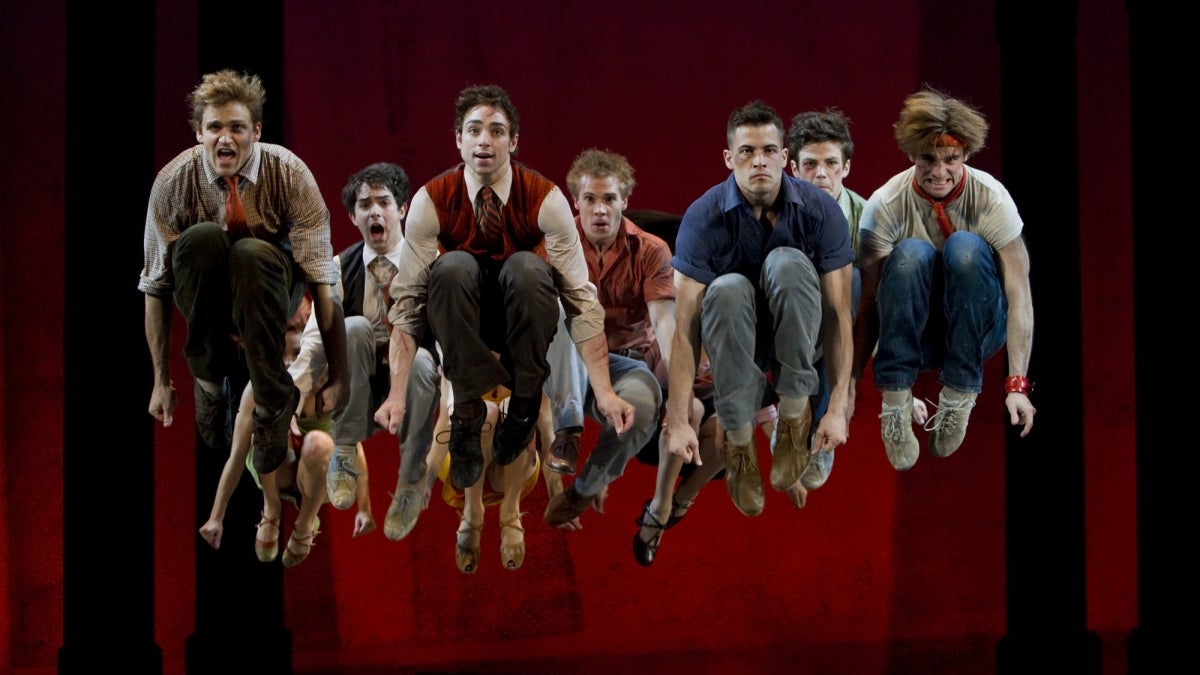'West Side Story' – not just for the 'Mad Men' generation

More than 50 years ago, “West Side Story” was the darling of Broadway.
What “Rent” was in the 1990s, “West Side Story” was in the 1950s and 60s. It shocked and inspired audiences alike with its gritty New York urban sensibility; its minimalist stage setting; its raw, relentless emotional power; its modern songwriting and stunning choreography.
It had switchblades, gang fights, and even a bedroom scene. Most importantly, however, the show shifted Americans’ ideas about what musical theatre could be.
For those living beneath a rock, “West Side Story” is the modern-day, musical, New York street-gang version of William Shakespeare’s “Romeo and Juliet.” In this Broadway adaptation, the menacing Jets and the tough-as-nails Sharks stand in for the families of the Montagues and the Capulets as bitter rivals. Playing Romeo is “Tony,” who holds allegiance with the Jets but falls in love with “Maria,” the unfortunate sister of “Bernardo,” who is the leader of the Sharks.
And (you guessed it) drama ensues.
Back on the block and looking for trouble, “West Side Story” is coming to ASU Gammage for a week of performances, Sept. 27 through Oct. 2, as part of its national Broadway tour. And it’s not just for the “Mad Men” generation either.
Sure, there might be little shock factor left in switchblades or a bedroom scene, especially in today’s inflated market of the avant-garde – replete with evocative adult moments à la Broadway’s “Spring Awakening” and “Avenue Q” – but what “West Side Story” still has in spades is its attention to social issues that are anything but vintage, nor limited to New York.
Themes of immigration, class, race and gender all feed into a snowballing force that drives “West Side Story” like a freight train right through Acts one and two, and the show doesn’t stop for a breather. It also tells one of the most epic love stories of all time with the help of a musical score that has become iconic with tunes such as “Somewhere” and “Tonight” and “America.”
“In so many ways, the show is a reflection of our American history,” says Cary Tedder, "West Side Story" castmember playing “Snowboy” and the understudy for “Tony.” “Originally, the show was going to be called ‘East Side Story’ with the Catholics against the Jews, but at the time New York was dealing with a wave of Puerto Rican immigrants, who were not welcome in the city,” Tedder says.
Just like any other American immigration story, New Yorkers felt the newcomers were a threat to their jobs and way of life, Tedder says.
Tedder adds that the story takes place in Manhattan’s Lincoln Center, which then was a rough part of town, where cultures collided. It is the Gammage stage, then, that will become the point of collision, and not just for the white working-class Jets and the new-in-town Sharks. The musical will be a meeting of older and younger generations – perhaps reminding them just how much history they share.
The performances also will mark the final moments together for the cast, as many members are scheduled to leave the show Oct. 3 and will meet their replacements while here in Tempe.
Tedder says the tour has been hugely successful, but that he is looking forward to getting back home, which is, none other than, New York City.
For more information, or to purchase tickets online to any of the Sept. 27-Oct. 2 performances, visit ASU Gammage.